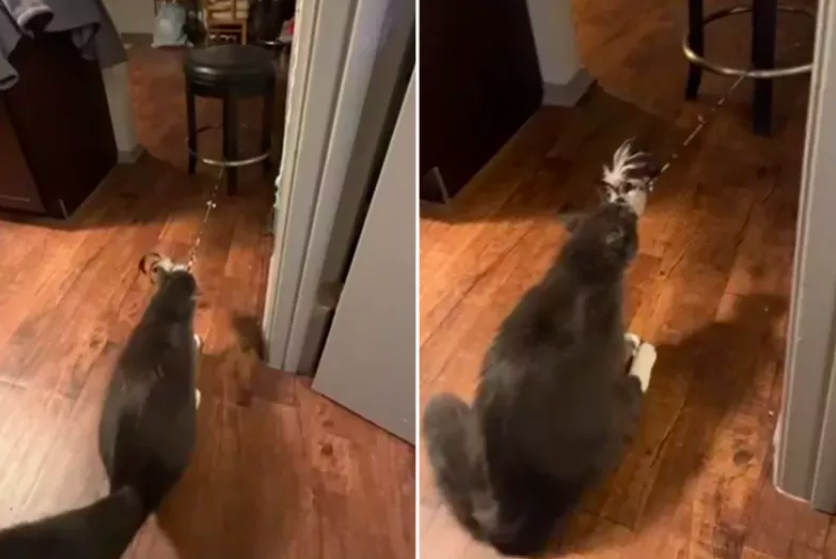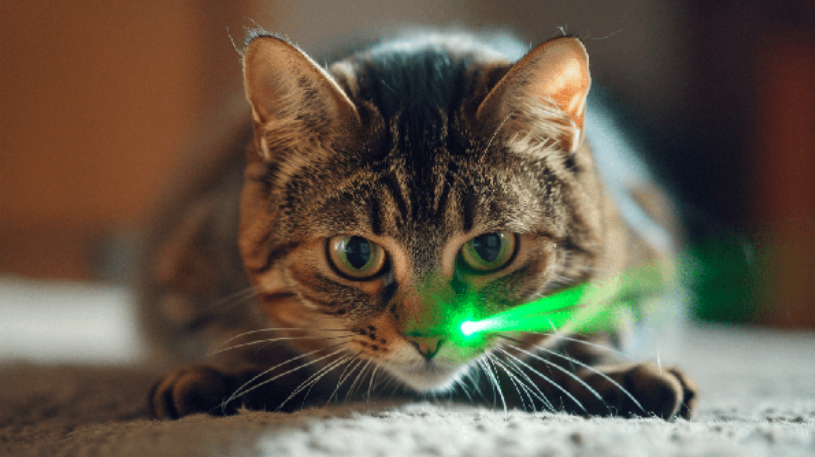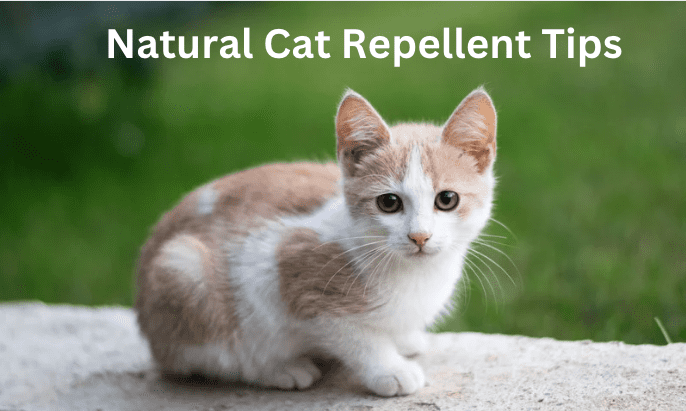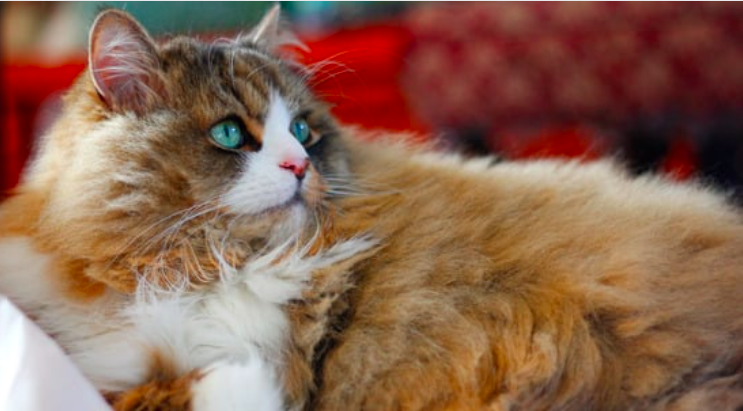Cats
Ragdoll Cat Breed Profile, Characteristics And Information!

Ragdoll Cat Breed Profile, Characteristics, And Information!
Ragdolls have a beautiful appearance and are well-known for having wonderful temperaments.
It is the second most popular breed among those registered with the Governing Council of the Cat Fancy (GCCF), and it ranks even higher among cat owners!
The Ragdoll Cat Breed
Aside from being a stunningly beautiful cat, the Ragdoll is the second most popular cat breed that has been registered with the Governing Council of the Cat Fancy (GCCF) and is even more popular among cat lovers!
They have it all in the eyes of many: big blue eyes, a sweet face, a silky coat, and a heart-melting spirit. One of the only things they ask in return for their loyalty is to become a part of your world.
They love being in the company of others, and their distinct ‘smiley’ expression makes them a pleasure to be around. The more affection and time you give to a Raggie, as they are affectionately known, the more affection and attention you will receive in return.
Beneath the semi-longhaired coats and distinctive markings, there is a cat with a muscular body and a lot of substance. They may be large and playful, but they are also well-known for having a laid-back, ‘that’s life’ attitude toward life.
As a result, they are typically kept as indoor cats and are not allowed to roam freely unless under strict supervision. It doesn’t matter how many different things they are, and they are not street smart.
Because they are a sensitive breed, they will suffer if they are left alone for long periods or not kept entertained at all times. Their coats require a couple of brushings per week, particularly under the legs, to keep them from matting and becoming matted in the winter.
They usually enjoy being groomed, and, like many of the longer-coated breeds, they tend to look very beautiful in the winter with their fluffy ruffs and knickerbockers, which add to their winter appeal.
Roz Hamilton, owner of Phatpaws Ragdolls in Bedfordshire, has this to say about her breed: “His laid-back, floppy demeanor has earned him the nickname “Ragdoll.” They are, on the other hand, extremely tenacious.
Their demeanor may be laid-back, but this does not imply that they are lacking in intelligence. They have a very high level of intelligence and are quick to figure things out. They enjoy being entertained and despise routine.
They are constantly on the lookout for human companionship and will never be more than a few feet away from you.”It is widely believed that the Ragdoll breed was named as a result of their tendency to become completely limp (Ragdoll-like) when picked up.
However, Roz asserts that the majority of her cats do indeed behave in this manner: “I believe that this ‘floppiness’ is due to Ragdoll nature, rather than frame or composition,” she says.
“I believe the floppiness results from complete trust and relaxation when being held,” says the author.
Linda Moore, the honorary secretary of the Progressive Ragdoll Breed Cat Club, has the following about her breed: “They’re also exceptionally good with children, and they positively react to them.
They have the ability to detect personalities and boisterousness in others and will interact with them in various ways depending on what they detect. I have never, ever seen a Ragdoll scratch a child –
They are very good at figuring out what is going on and retreating if necessary.” Ragdolls can also learn various ‘party tricks,’ ranging from recall to ‘roll over,’ and you might even enjoy a few rounds of fetch with them if you give them the proper training.
The Origins Of The Ragdoll Cat Breed
Even though the Ragdoll’s history is rife with myths and half-truths, it is known that the cats were first bred in the early 1960s by Ann Baker in the state of California in the United States.
To produce two sons by different sires, Ann mated a white Angora-like Josephine with two sons by different sires, one of whom was Birman like Daddy Warbucks and the other Persian like Blackie.
Buckwheat and Fugianna, the daughters of these pairings, were later mated with Daddy Warbucks, and thus the Ragdoll breed was established.
Ann established a breeding program with franchises, but her eccentricity prompted others to break away and pursue the breed’s development on their own. Denny and Laura Dayton were among those who worked to have Ragdolls recognized in the United States.
Ragdolls were first brought to the United Kingdom by Pat Brownsell and Lulu Rowley in 1981, and the breed was recognized by the General Council of Canine Federation nine years later.
The Looks Of The Ragdoll Cat Breed
John Harrison, vice president of the PRBCC and a 25-year show judge, explains that there isn’t a huge variety of colors or patterns available with semi-longhaired Ragdolls – but that this is evidence of the breed’s popularity as a pet, rather than just “just a pretty cat.”
Ragdolls are available in various colors, including seal, blue, chocolate, lilac, red, and cream. They are available in colorpoint, mitted, and bi-colour patterns and tabby and tortoiseshell options.
John expresses himself as follows: “In terms of where the white can appear, the standard is very specific. Breeders who are very good at what they do have it down to a science!” He says: “There’s nothing wimpy about them; you want cats who are strong and hefty.
Strong-boned legs, a flat head with good width between the ears, large cheeks, a shortish nose with a curving profile, and blue eyes distinguish these cats from other breeds.
They must also have a short neck and a long body – this may seem strange, but it is the shape of the good ones!”
Health And Welfare Of The Ragdoll Cat Breed
Like some other breeds, Ragdoll cats have been known to suffer from Hypertrophic cardiomyopathy (HCM), a hereditary heart defect, and polycystic kidney disease (PKD). However, the latter is uncommon in Ragdolls in the United Kingdom.
Those considering purchasing a kitten should confirm with the breeder that both parents have tested negative for the HCM before purchasing. To be certain, request to see a certificate or test result.
Ragdoll Cats kittens
A Ragdoll kitten will cost approximately £500 or more and should be healthy and energetic. As he grows older, he becomes more relaxed.
Check to see that the kittens were born and raised indoors, as this should indicate that they have been well-socialized and have a pleasant temperament. It is not until the Ragdoll is around 13 weeks old that his true coat color develops fully.
Is This The Cat You’ve Been Looking For?
Even though Ragdolls are ideal for most households, from elderly owners to young families, single people to dog lovers, it is important to consider their need for companionship before bringing one into your home.
If they are at home alone, says Linda, “it’s not ideal, especially if you’re away at work for most of the day.” “They do require some kind of companionship. On the other hand, they are quite easygoing and will happily coexist with any other animal.”
Ragdolls are content to be kept as indoor pets, but if you have the opportunity to let them out, make sure that your garden is cat-proof because this breed is not very road-savvy.
“Most importantly, do your research before getting a Ragdoll – they may be beautiful, but appearances aren’t everything!” says Linda.
Living With Ragdolls Is A Unique Experience
I’ve known about the Ragdoll breed for several years; a friend of mine recently adopted one, and I fell in love with her straight away.
Growing up, my family was always a cat family, and I had never been without a cat until I moved to Germany with my husband, who was in the military and was stationed there at the time.
In the year leading up to our return to the United Kingdom, I conducted extensive research on the Ragdoll breed and concluded that they would be ideal for our family, particularly our young daughter, Lottie.
We were overjoyed when we eventually got our hands on Figaro, a male seal-point.
In the following weeks, we maintained frequent contact with the breeder and determined that we would also like to adopt Figaro’s blue-point brother, Midge – so we returned to Linda to pick up addition number two!
Their relationship developed quickly, and we can’t imagine our lives without them. They are unquestionably the lords of the manor now. “Our Ragdolls are now almost a year old and, as a result, they are full of mischievous antics.
Having only one Ragdoll was always on my wish list, but it turns out that Ragdolls are social creatures, and having two boys was unquestionably the best decision for us. Lottie, our four-year-old daughter, adores our sons, as do we.
Despite their small size, they are the most peaceful, friendly, and intelligent breed I have ever encountered. During fetch, Figaro will bring his toy back to you, where he will drop it at your feet so that you can throw it again;
Midge is capable of placing his paws on the drawer containing treats, leaning back and pulling the drawer open, which has resulted in us returning home to find them tucking into their treats!
They are the ideal companions and the perfect addition to our family. Our boys are best friends of Lottie: wherever she is, they are with her, whether she is coloring, reading stories, playing doctors and vets, or playing hide and seek or chase!
They are Lottie’s best friends! I don’t recall ever seeing a cat with such human-like characteristics before. “Ragdolls have completely won me over, and I would never consider owning another breed.
The breed is the most strikingly beautiful and genuinely affectionate of any I have come across, and I have recommended them to many cat-lover friends.
I would recommend that if you are out of the house a lot, you should consider getting a pair of Ragdolls: double the affection!
They are the most wonderful companions anyone could ever hope to have, and yes, they do molt; however, a good brush once or twice a week and a pair of good-quality nail clippers will take care of that.
If you want to get a Ragdoll, go ahead and do so. it would be the best decision you have ever made!”
Ragdoll Features
- Cat Family: Yes.
- Breed number: Rag.
- Life expectancy: 14 to 15 years on average.
- Temperament: Ragdoll cats are affectionate, sensitive, intelligent, and devoted.
- Males weigh 6.8kg to 9kg.
- Females weigh 4.5kg to 6.8kg.
- Availability: Easy
- Colors: Colourpoint, mitted, and bi-color coat patterns, with colors such as seal, blue, red, cream, chocolate, lilac, tortie, and tabby.
We appreciate you for taking the time to read!
Finally, we hope you found this article interesting? And what do you think about ”Ragdoll Cat Breed Profile, Characteristics And Information!?”
Please you should get in touch with us if you want to contribute to this article or advertise.
And let us know if you observe something that isn’t quite right.
Cats
Clever Cats: Breeds That Learn Fast
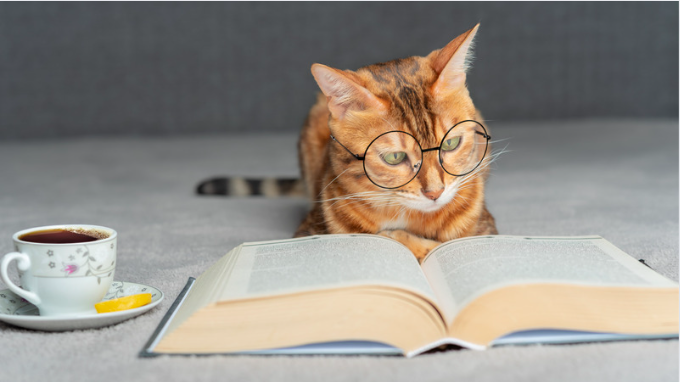
Clever Cats: Breeds That Learn Fast
Cats have always fascinated us with their agility, independence, and sometimes enigmatic behavior. Among the vast array of feline breeds, some stand out for their remarkable intelligence and ability to learn quickly.
In this article, we will delve into the world of these exceptional cat breeds, exploring their unique characteristics, training capabilities, and what makes them such quick learners.
Whether you’re a seasoned cat owner or considering adopting a new feline friend, this comprehensive guide will help you understand the breeds that are not only intelligent but also a joy to train.
Why Intelligence Matters in Cats
Understanding Feline Intelligence
Feline intelligence is a multi-faceted trait that encompasses problem-solving abilities, social learning, and adaptability. Unlike dogs, cats often showcase their intelligence in more subtle ways, such as manipulating objects to get what they want or learning routines and commands.
Benefits of Owning Intelligent Cats
Owning an intelligent cat comes with several benefits. These cats are more interactive and engaging, making them excellent companions. They can learn tricks, follow commands, and even understand basic household rules, which makes living with them more enjoyable and less challenging.
Top Cat Breeds Known for Their Intelligence
Abyssinian
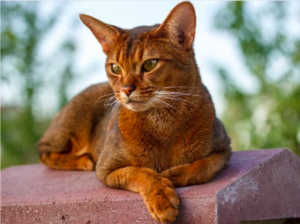
Overview
The Abyssinian is often hailed as one of the smartest cat breeds. Known for their curiosity and playful nature, Abyssinians are quick learners who thrive on mental stimulation.
Training and Activities
Abyssinians are highly trainable and enjoy interactive toys and puzzle feeders. They can learn tricks such as fetching and even walking on a leash. Their love for heights means they appreciate cat trees and climbing structures.
Siamese
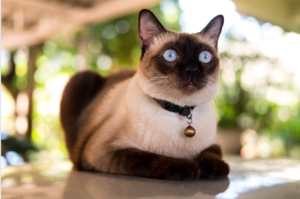
Overview
Siamese cats are not only intelligent but also highly vocal and sociable. They form strong bonds with their owners and are always eager to engage in activities.
Training and Activities
Siamese cats are quick to learn tricks and commands. They enjoy interactive play and can be trained to perform simple tasks like opening doors or retrieving items. Their vocal nature also makes them responsive to verbal cues.
Bengal
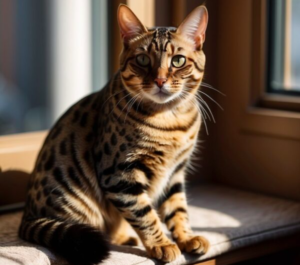
Overview
Bengals are known for their striking appearance and high energy levels. Their intelligence is reflected in their ability to solve problems and learn complex tasks.
Training and Activities
Bengals enjoy activities that challenge their minds, such as agility courses and puzzle toys. They can be trained to walk on a leash and perform tricks. Providing them with interactive playtime helps in channeling their energy positively.
Burmese
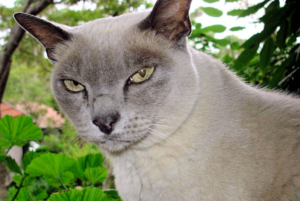
Overview
Burmese cats are affectionate, people-oriented, and intelligent. They enjoy being involved in family activities and can be trained to follow various commands.
Training and Activities
Burmese cats are quick learners and respond well to positive reinforcement. They enjoy learning tricks, playing fetch, and interactive games that stimulate their minds.
Scottish Fold
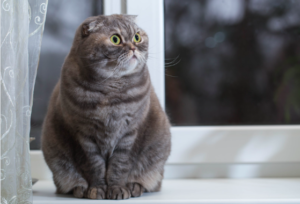
Overview
Scottish Folds are known for their distinctive folded ears and sweet demeanor. Despite their calm appearance, they are intelligent and can learn quickly.
Training and Activities
Scottish Folds enjoy interactive toys and games. They can learn tricks and commands and appreciate routines that keep their minds engaged.
Training Tips for Intelligent Cats
Start Early
Begin training your cat as early as possible. Kittens are more receptive to learning new behaviors and routines.
Use Positive Reinforcement
Reward your cat with treats, praise, or playtime whenever they successfully perform a desired behavior. Positive reinforcement strengthens the association between the action and the reward.
Keep Sessions Short and Fun
Cats have shorter attention spans than dogs, so keep training sessions brief and enjoyable. Incorporate playtime to make learning fun for your cat.
Be Patient and Consistent
Patience and consistency are key when training cats. Repeat commands and routines regularly, and avoid punishing your cat for mistakes. Consistency helps reinforce learning and builds trust.
Challenges of Training Intelligent Cats
Independence and Stubbornness
Intelligent cats can sometimes be independent and stubborn. They might choose to ignore commands if they are not in the mood, so it’s important to understand their behavior and work with it.
Need for Mental Stimulation
Highly intelligent cats require constant mental stimulation. Boredom can lead to behavioral issues, so ensure they have plenty of toys, activities, and interaction to keep their minds engaged.
Managing High Energy Levels
Breeds like Bengals have high energy levels that need to be managed. Providing them with enough physical and mental exercise is crucial to prevent destructive behavior.
Living with Intelligent Cats
Creating an Enriched Environment
An enriched environment is essential for intelligent cats. This includes a variety of toys, climbing structures, scratching posts, and interactive feeders to keep them stimulated.
Social Interaction
Intelligent cats thrive on social interaction. Spend quality time playing, training, and simply bonding with your cat to ensure they feel valued and engaged.
Understanding Their Needs
Each intelligent breed has its own unique needs and preferences. Understanding these and catering to them will help you build a strong and positive relationship with your cat.
Conclusion
Owning an intelligent cat can be an incredibly rewarding experience. These quick learners bring joy, challenge, and companionship to their owners. By understanding their unique characteristics and providing the right environment and training, you can foster a deep and fulfilling relationship with your feline friend.
Whether you choose an Abyssinian, Siamese, Bengal, Burmese, or Scottish Fold, you’re sure to enjoy the remarkable intelligence and personality they bring into your home.
Frequently Asked Questions (FAQs)
What makes a cat breed intelligent?
Intelligent cat breeds often show high levels of problem-solving abilities, adaptability, and social learning. They can quickly learn commands, tricks, and routines.
Can all cats be trained?
While some breeds are more receptive to training than others, all cats can be trained to some extent. Patience, consistency, and positive reinforcement are key to successful training.
What are the best toys for intelligent cats?
Interactive toys, puzzle feeders, and climbing structures are ideal for intelligent cats. These toys provide mental stimulation and keep them engaged.
How do I keep my intelligent cat from getting bored?
Provide a variety of toys, engage in regular playtime, and introduce new activities regularly. Rotating toys and creating an enriched environment also help prevent boredom.
Are intelligent cats more difficult to care for?
Intelligent cats can be more demanding in terms of mental stimulation and interaction. However, with the right approach and environment, they can be delightful companions.
We appreciate you for taking the time to read this article!
Finally, we hope you found this article interesting? And what do you think about ”Clever Cats: Breeds That Learn Fast!?”
Please feel free to share or inform your friends about this article and this site, thanks!
And let us know if you observe something that isn’t quite right.
Cats
The Enchanting Scottish Fold: A Guide to the Adorable Feline with Folded Ears
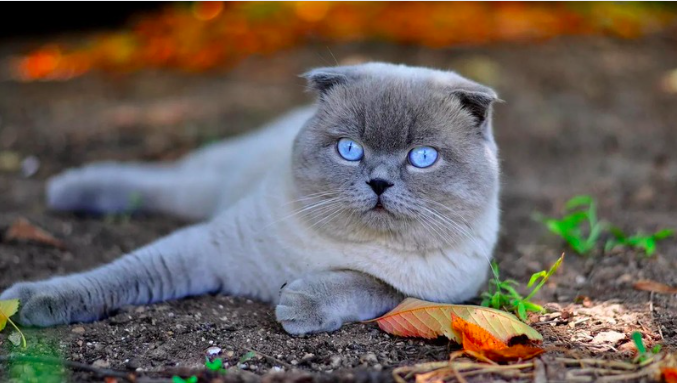
The Enchanting Scottish Fold: A Guide to the Adorable Feline with Folded Ears
Welcome to the world of the Scottish Fold cat, where charm and curiosity meet in an irresistibly adorable package. With their distinctive folded ears and sweet expression, Scottish Folds have captured the hearts of cat lovers around the world. Originally hailing from Scotland, these cats are known for their gentle demeanor, playful nature, and loving personality.
In this comprehensive guide, we will delve into the fascinating world of Scottish Fold cats, exploring their history, physical characteristics, personality traits, and care requirements. Whether you’re a seasoned cat owner or considering adding a feline friend to your family, the Scottish Fold’s unique charm and affectionate nature make them a delightful addition to any home. Join us as we unravel the enchanting tale of the Scottish Fold cat and discover why they are such beloved companions.
Fold
Overview
The Scottish Fold cat is a charming and distinctive breed known for its unique folded ears and sweet expression. Originating from Scotland in the 1960s, these cats have captured the hearts of many with their endearing appearance and affectionate nature. Scottish Folds are known for their gentle and loving temperament, making them wonderful companions for families and individuals alike.
History and Origins
The Scottish Fold breed traces its roots back to a white barn cat named Susie, who was found in Scotland in the early 1960s. Susie had a unique genetic mutation that caused her ears to fold forward, giving her an owl-like appearance. This trait was passed down to her kittens, and thus, the Scottish Fold breed was born. The breed quickly gained popularity for its distinctive look and friendly demeanor, and it was officially recognized by cat registries in the 1970s.
Physical Characteristics
- Folded Ears: The most distinctive feature of the Scottish Fold is its folded ears, which give the cat a sweet and owl-like appearance. Not all Scottish Folds have folded ears; some may have straight ears, known as “straights,” which are also common in the breed.
- Coat and Colors: Scottish Folds can have either a short or long coat, both of which are dense and plush. They come in a variety of colors and patterns, including tabby, tortoiseshell, and solid colors like white, black, and blue.
- Body Structure: Scottish Folds are medium-sized cats with a rounded appearance. They have sturdy bodies, round faces, and large, expressive eyes that give them a sweet and gentle expression.
Personality and Behavior
Scottish Folds are known for their calm and laid-back demeanor. They are affectionate cats that enjoy being around people and are often described as “lap cats” due to their love of cuddling. They are also known for their playful nature and enjoy interactive toys and games. Scottish Folds are generally good with children and other pets, making them a great choice for families.

Health and Care
- Ear Care: Due to their folded ears, Scottish Folds may be prone to ear infections. It’s important to regularly check and clean their ears to prevent issues.
- Grooming: Scottish Folds have dense coats that require regular grooming to prevent matting and tangling. Weekly brushing is usually sufficient to keep their coat in good condition.
- Health Concerns: Scottish Folds are generally healthy, but they may be prone to certain genetic conditions, including a skeletal disorder known as osteochondrodysplasia. Responsible breeding practices can help minimize the risk of these health issues.
Training and Activities
Scottish Folds are intelligent cats that can be trained to perform tricks and commands. They enjoy interactive play and benefit from toys that stimulate their minds and bodies. Providing them with scratching posts and other outlets for their natural behaviors can help keep them happy and healthy.
Compatibility with Families and Other Pets
Scottish Folds are known for their gentle and affectionate nature, making them great companions for families. They are good with children and other pets, including dogs, and can adapt well to different environments. Their loving and sociable nature makes them a popular choice for households looking for a friendly and affectionate pet.
Conclusion
The Scottish Fold cat is a unique and charming breed known for its folded ears and sweet expression. With their gentle demeanor and affectionate nature, Scottish Folds make wonderful companions for families and individuals alike. Whether you’re looking for a lap cat to cuddle with or a playful friend to keep you entertained, the Scottish Fold cat is sure to bring joy and companionship to your home.
FAQs about Scottish Fold Cats
Why do Scottish Folds have folded ears?
Scottish Folds have a genetic mutation that affects the cartilage in their ears, causing them to fold forward. This unique trait gives them their distinctive appearance.
Are Scottish Folds prone to ear problems due to their folded ears?
Yes, Scottish Folds may be more prone to ear infections due to the fold in their ears, which can trap dirt and moisture. Regular cleaning and monitoring of their ears can help prevent issues.
Do Scottish Folds have any health issues associated with their folded ears?
Scottish Folds may be prone to a condition called osteochondrodysplasia, which affects the development of their cartilage and bones. Responsible breeding practices can help reduce the risk of this condition.
Are Scottish Folds good with children and other pets?
Scottish Folds are known for their gentle and friendly nature, making them good companions for families with children and other pets. They enjoy socializing and being part of the family.
Do Scottish Folds require a lot of grooming?
Scottish Folds have dense coats that require regular grooming to prevent matting and tangles. Weekly brushing is recommended to keep their coat in good condition.
We appreciate you for taking the time to read this article!
Finally, we hope you found this article interesting? And what do you think about ”The Enchanting Scottish Fold: A Guide to the Adorable Feline with Folded Ears!?”
Please feel free to share or inform your friends about this article and this site, thanks!
And let us know if you observe something that isn’t quite right.
Cats
The Enchanting Burmese Cat: Affectionate, Playful, and Loyal
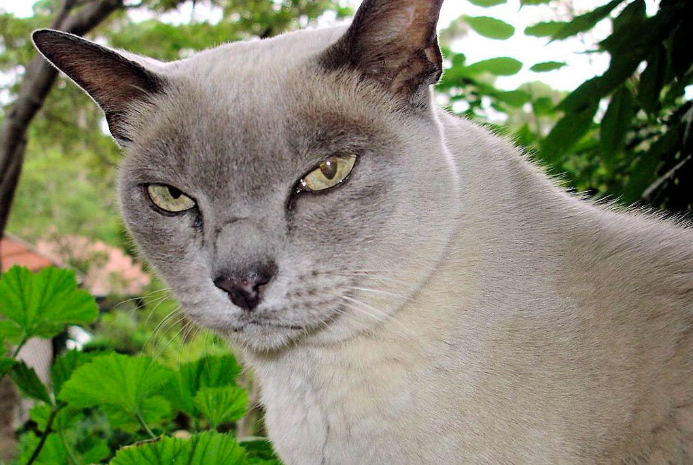
The Enchanting Burmese Cat: Affectionate, Playful, and Loyal
Enter the world of the Burmese cat, where elegance meets affection in a charming feline companion. Originating from the temples of Burma, these cats have captured the hearts of cat lovers worldwide with their striking appearance and loving nature. With their sleek coats, expressive eyes, and playful demeanor, Burmese cats are not just pets; they are cherished members of the family.
In this comprehensive guide, we delve into the captivating world of Burmese cats, exploring their history, physical characteristics, personality traits, and care requirements. Whether you’re a seasoned cat owner or considering adding a feline friend to your family, the Burmese cat’s unique blend of beauty, intelligence, and affection is sure to captivate you. Join us as we unravel the enchanting tale of the Burmese cat and discover why they are such beloved companions.
Burmese
Overview
The Burmese cat is a breed known for its striking appearance and affectionate nature. Originating from Burma (now Myanmar), these cats are renowned for their sleek, muscular bodies, expressive eyes, and silky coats. Burmese cats are often described as “people-oriented,” as they form strong bonds with their human companions and enjoy being part of the family. Their playful and curious nature makes them delightful companions for both children and adults alike.
History and Origins
The history of the Burmese cat can be traced back to ancient Burma, where they were considered sacred and kept by monks in temples. They were later brought to the West in the early 20th century and quickly gained popularity for their striking appearance and affectionate personality. The breed has since become a favorite among cat enthusiasts worldwide, known for its loving and loyal nature.
Physical Characteristics
- Coat and Colors: Burmese cats have short, sleek coats that lie close to the body. They come in a variety of colors, including sable, champagne, blue, and platinum. The coat is soft and silky to the touch, adding to the breed’s overall charm.
- Body Structure: Burmese cats are medium-sized with a muscular build. They have rounded heads, large, expressive eyes, and short, straight noses. Their compact bodies give them a sturdy appearance, and they move with grace and agility.
- Eyes and Ears: Their eyes are one of their most striking features, being large, expressive, and usually a deep, rich color that complements their coat. Their ears are medium-sized, slightly rounded at the tips, and set wide apart on the head.
Personality and Behavior
Burmese cats are known for their affectionate and sociable nature. They are often described as “dog-like” due to their tendency to follow their owners around the house and seek out human companionship. They are also highly intelligent and enjoy interactive play, making them great companions for families with children or other pets.
In addition to their affectionate nature, Burmese cats are also known for their vocalizations. They have a soft, sweet voice that they use to communicate with their owners, often engaging in “conversations” and expressing their needs and desires.

Health and Care
- Grooming: Burmese cats have short coats that require minimal grooming. Weekly brushing is usually sufficient to remove loose hair and keep their coat shiny. They also benefit from regular dental care to prevent oral health issues.
- Diet: A high-quality, balanced diet is essential for maintaining the health and vitality of Burmese cats. They should be fed a diet that is appropriate for their age, size, and activity level to ensure they receive the nutrients they need.
- Health Concerns: Burmese cats are generally healthy, but they can be prone to certain genetic conditions such as hypertrophic cardiomyopathy (HCM) and diabetes. Regular veterinary check-ups and a healthy diet can help manage these risks.
Training and Activities
Burmese cats are intelligent and can be trained to perform various tricks and commands. They enjoy interactive play and thrive on mental stimulation. Providing them with toys, puzzle feeders, and opportunities for play can help keep them entertained and prevent boredom.
Compatibility with Families and Other Pets
Burmese cats are known for their loving and social nature, making them great companions for families. They get along well with children and other pets, including dogs, as long as they are properly introduced. Their affectionate demeanor and playful nature make them a popular choice for households looking for a friendly and engaging pet.
Conclusion
The Burmese cat is a breed beloved for its affectionate nature, striking appearance, and playful personality. Whether you are looking for a loyal companion or a playful friend, the Burmese cat is sure to bring joy and warmth to your home. With their loving nature and sociable demeanor, Burmese cats make wonderful pets for families and individuals alike, enriching their lives with their presence and affection.
FAQs about Burmese Cats
What is the temperament of a Burmese cat like?
Burmese cats are known for their affectionate and social nature. They are often described as “dog-like” due to their loyalty and tendency to follow their owners around the house. They enjoy being involved in family activities and form strong bonds with their human companions.
Are Burmese cats good with children and other pets?
Yes, Burmese cats are generally good with children and other pets. They are playful and enjoy interactive play, making them great companions for families with children. They also get along well with other pets, including dogs, especially if they are introduced properly.
Do Burmese cats require a lot of grooming?
Burmese cats have short, sleek coats that require minimal grooming. Weekly brushing is usually sufficient to remove loose hair and keep their coat shiny. They also benefit from regular dental care to prevent oral health issues.
Are Burmese cats vocal?
Burmese cats are known for their soft, sweet voice, but they are not excessively vocal. They use their voice to communicate with their owners, often engaging in “conversations” and expressing their needs and desires.
What kind of environment is best for a Burmese cat?
Burmese cats thrive in environments where they have plenty of opportunities for play and interaction. They enjoy being part of the family and should have access to toys, scratching posts, and other enrichment activities. They also enjoy having access to outdoor enclosures or safe outdoor spaces where they can explore and indulge their natural instincts.
We appreciate you for taking the time to read this article!
Finally, we hope you found this article interesting? And what do you think about ”The Enchanting Burmese Cat: Affectionate, Playful, and Loyal!?”
Please feel free to share or inform your friends about this article and this site, thanks!
And let us know if you observe something that isn’t quite right.
-

 Pet Care2 years ago
Pet Care2 years agoThe Best Dog Collars For 2022
-

 Dogs2 years ago
Dogs2 years agoBichon Frise: The Happy, Playful, and Cuddly Companion
-

 Trending Pet Stories1 year ago
Trending Pet Stories1 year ago2023 ‘World’s Ugliest Dog’ Winner: Scooter’s Tale of Resilience
-

 Animals2 years ago
Animals2 years agoAre There Animals Having Down Syndrome?
-

 Pets2 years ago
Pets2 years agoThe Fascinating World Of The Red Chameleon
-

 Dogs2 years ago
Dogs2 years agoTop 10 Most Popular Dog Breeds According To AKC.
-

 Dogs2 years ago
Dogs2 years ago21 Dog Breeds That Resemble Bears Or Teddy Bears!
-

 Dogs2 years ago
Dogs2 years agoEskimo Dogs from Canada – What Are They? – Find Out!


